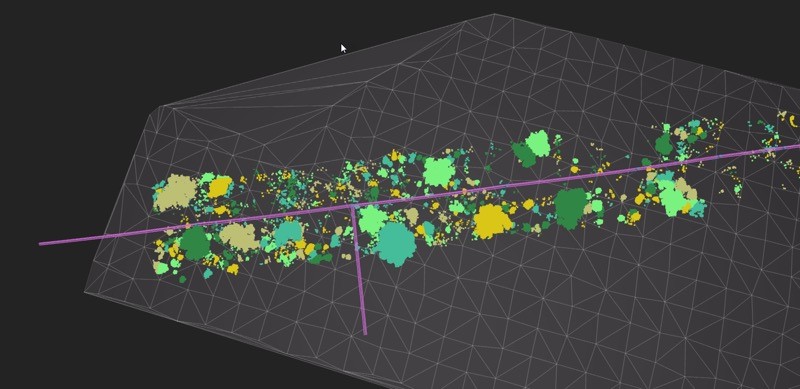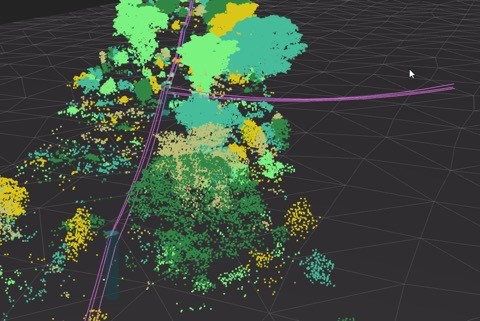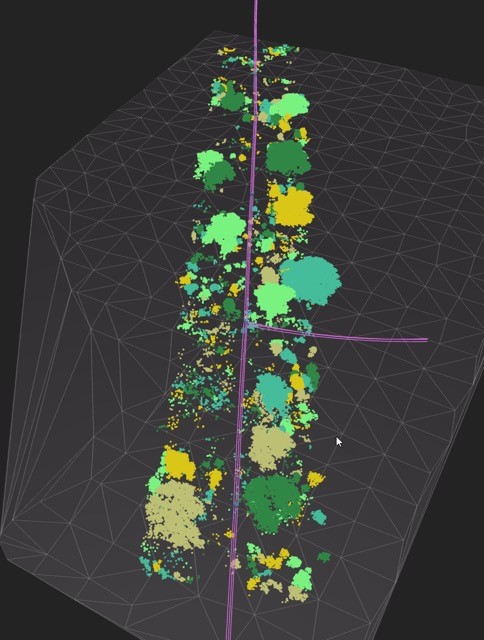If you see a helicopter hovering over your house this month, it is unlikely to be the precursor to a special ops raid. Instead, Evoenergy, the ACT electricity and gas distributor, is conducting its annual aerial inspection program.
The helicopter, a Long ranger VH-OAS, will fly over the electrical network to identify any trees or vegetation that are too close to powerlines, and any defects to pole tops or wires, Timothy Juhasz, group manager network services, explained.
Evoenergy uses LiDAR (Light Detection and Ranging), an active remote sensing system that measures vegetation height, to determine the distance between powerlines and trees, with minimal hovering.
A helicopter is the most efficient way to view the powerline in one hit, Mr Juhasz said.
“There’s a lot of defects that we can pick up from the air, looking down on top of the poles and wires, that you can’t actually see from the groundline. Flying over the pole top gives us the ability to get unimpeded LiDAR imagery.”

Vegetation that is too close to the line presents a safety risk: if it touches the line, it can cause a fire, especially in bushfire-prone areas, or become a live conductor, shocking anyone who touches it. In storms, branches could fall in the wind, taking out the power line and causing a blackout, or bringing electrical wires to earth. (Grounded, but dangerously ungrounded.)
“This is a proactive preventative inspection program to help us reduce the likelihood that that will happen,” Bronwen Butterfield, assistant group manager for customer delivery, said.

The helicopter will fly for the entirety of March, from 8am to 4pm on business days. (Possibly on Saturdays, if flights are rescheduled for bad weather.) It will start in the south and work its way to north Canberra, inspecting 2,394 km of overhead lines and 53,000 power poles.
The public should not be concerned about their privacy, Mr Juhasz said.
The helicopter will fly at a minimum 1,000 feet above the ground; and its flight schedule is planned and geocoded so the camera on the helicopter is always pointed at Evoenergy’s assets. (Rather than those of cavorting sunbathers.) Noise reduction technology has been retrofitted to the helicopter to lessen the impacts on the community.
The public can check the flight schedules on Evoenergy’s website, and a live interactive map shows where the helicopter is in real time. (Useful information for farmers who want to put their horses and livestock away.)
LiDAR prioritises vegetation management work on a scale from immediate response to reactively clear to no action required / monitor.

Evoenergy has an obligation to inspect and maintain trees on government land that encroach on the network; however, trees and vegetation on private residences are the homeowner’s responsibility.
“We want to help the community; and that’s what we’re doing with this program to identify where there’s any trees or vegetation close to powerlines on public property, so we can make it easier for the private owners to manage their own vegetation,” Ms Butterfield said.

Most trees and vegetation must be kept at least 1 metre from service lines or 1.5 metres from powerlines – or 2 metres for higher voltage powerlines and in bushfire-prone areas. If LiDAR technology indicates the trees are too close, Evoenergy will write to landowners to let them know and that they need to trim their trees, Ms Butterfield said.
When trees have encroached within the safe clearance distance, homeowners must use an Evoenergy-accredited arborist, because only they are authorised to work near the network, Ms Butterfield said. In many cases, they will have to request an outage to get within safe distance.
Even if the tree is outside the danger zone, homeowners might wish to use an arborist, Ms Butterfield suggested, because they know about tree health, and can advise on the best way to trim. They are also aware of restrictions for trimming trees that might be protected under ACT environmental laws.
Evoenergy recommends keeping trees and vegetation at least 2.5 metres from powerlines, and allowing for three years of regrowth to avoid regular trimming.
However, Ms Butterfield said: “With the wet environment and climate we’ve had over the last few years, the growth rate is really fast. Hence why we go out every year to let people know.”
When landscaping, homeowners should choose plants wisely. “The type of species will impact how high it grows,” Ms Butterfield said. “Try not to grow trees that will grow over the powerlines in any close proximity.”
If the public has any questions, they can call Evoenergy on 131093.



